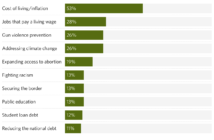The Article below was published in Vol. 136, Issue 8 of the Lake Forest College Stentor on April 30, 2021.
Emily Mosher ’21
Staff Writer
It was a mild winter night on November 14, 2020, around 7:30 p.m., when 27-year-old Dragomir Misic was riding his bicycle to his friend Jimmy Kubota’s house in Aurora, Illinois. Misic was travelling eastbound on Montgomery Road, headed to the subdivision where Kubota resided, only a few blocks from his own home. Soon, he would be lying dead in the roadway.
According to a witness on the scene, she called 911 after leaving a nearby neighborhood and seeing Misic’s body in the intersection of Montgomery Road and White Eagle Drive. Despite the newly installed cameras on the traffic lights and the regular busyness of the intersection, there were no witnesses to the accident.
Misic’s cousin, Frankie Misic, was in the neighborhood at his girlfriend’s house and rushed to the scene. He was met with a horrific sight.
“I didn’t know if there was something I could do, I was just in disbelief. I wanted to go hug him, I jumped the fence to go hug him, and the cop just dragged me out,” Frankie Misic recalls.
Misic was pronounced dead on the scene at 7:38 p.m. by Dr. Nedim Ozcakir who practices at Rush Copley Medical Center. Misic lay in the street, deceased, until 9:58 p.m., when he was transported to the DuPage County Coroner’s Office, according to the supplemental police report.
“Every time I close my eyes, I feel like I’m there again,” Frankie Misic said. At the retelling of the story, he choked back tears.
The fact that Dragomir Misic died on scene and the injuries he sustained suggest that the driver was driving fast. There were several possible leads, but most of them were exhausted. The traffic cameras in the intersection were broadcasting a live traffic feed, but none of the footage is stored for review. There were no homes with cameras facing the road where he was struck, and the businesses down the roadway have footage of the road that night, but nothing was caught.
So, how is it that the person who hit Misic with their car disappeared without a trace?
Misic left behind four sisters and a grieving mother, who is now missing the youngest of the family. He had a passion for dirt biking, outdoor activities, and cars.
However, he was not a lone victim. The prevalence of hit and runs has been on the rise since the early 2000s. According to AAA Foundation for Traffic Safety, in 2016 there were 2,049 fatalities from hit and runs. There are also several articles that suggest reckless driving is on the rise during COVID-19: with fewer drivers on the road, more reckless driving is occurring. There is more speeding and, therefore, hit and runs are more common.
“Draggy,” as Misic was referred to by his family and friends, had received a ticket for $600 in 2019 for riding his bicycle on the sidewalk. This was a ticket per the city of Aurora’s ordinance citing that anyone over 15 years of age could not ride a bicycle within city limits on a sidewalk. One of Misic’s sisters, Tatiana Jernstad, said this is a factor she believes contributed to his death.
“He never rode on the sidewalk again—because he didn’t want to get another ticket. This was absolutely crazy to me, because there was a sidewalk on the road he was hit on,” Jernstad says. “People usually go fast down that road. And to think that if he never got that ticket, he would have been on the sidewalk.”
In 2020, according to a project done by Outside magazine, 697 cyclists alone were killed in hit-and-run accidents. This shows a prevalence of cyclists getting killed in hit and runs, as opposed to just normal pedestrians or other vehicles. Many cities have ordinances or laws about cyclists being banned from riding on the sidewalk.
Since that night in November, the Misic family has gotten almost no updates from law enforcement.
“We haven’t heard anything in months,” Donata Misic, another one of Misic’s older sisters, shares. She estimated it has been six months since she last heard from law enforcement.
The police will not allow the family to collect Misic’s personal items or view the bike he was riding that night. They had hoped to see the bicycle and find some trace of paint or evidence they could take further and possibly get a make or model of the vehicle that struck him.
“At the beginning, they shared on the news that there were multiple suspects and they were going to be investigating. And I’m wondering if they just say that stuff. Because all of a sudden, they told us there were no suspects,” Jernstad says.
The police have still not called the family or shared information with them pertaining to the case since Misic was killed. The Aurora Police Department refused to comment. There were also disputes in the time he was killed, and various claims from different officers that he was killed at different times. The Misic sisters suspect that this case has been mishandled, but they are not sure if it is purposeful.
“They left evidence behind on the scene. His blood was still on the side of the road. And they wouldn’t tell us how he died,” Donata Misic says.
According to officer Aaron Kruchko and officer Mark Long of the Lake County Major Crash Assistance Team, these crimes can be difficult to solve.
“As much as we expect evidence to be left on the scene, that just isn’t always the case,” Kruchko says.
In fact, the intersection was equipped with newer cameras that would have captured the incident perfectly. However, these cameras simply provide a live feed that the county and public can access via the internet. The officers noted that this is something many counties have.
“That’s very common. We have a couple of intersections like that in Lake Forest. All of them are a live feed, none of them are recorded. We don’t have any control over them. You can log on and live feed watch them, and so can our deputies. But it’s not a recording,” Kruchko says.
Hit-and-run cases commonly go cold because lack of evidence typically means there are not many leads to follow. According to the National Highway Traffic Safety Administration, there were an estimated 737,100 hit and runs in 2015, which translates to a hit and run being committed every 43 seconds.
The Misic family is aware of how prevalent these crimes are, and wants to change the law in Aurora and see if anything can be done to prevent this from happening to someone else. Jernstad tried to reach Aurora’s Bicycle and Pedestrian Advisory Board, but after contacting them and never hearing back, she found no other avenues. The family said they are going to reach out again and continue pursuing possible legislation.
Misic’s “ghost bike,” a white bike that the Misic family placed by his memorial as a reminder to the community to be careful, will be displayed in downtown Aurora starting in May 2021. The display, called “Bikes in Bloom,” will feature bikes all over the downtown area with planters in the baskets, blooming with flowers. Photos of the bikes will be shared on social media via #AuroraBikes.
If you have any information regarding Misic’s case or anonymous tips about the case, call the Aurora Crime Stoppers at 630-892-1000 or Aurora Police at 630-256-5330. They are offering a $5,000 reward for information leading to an arrest.


